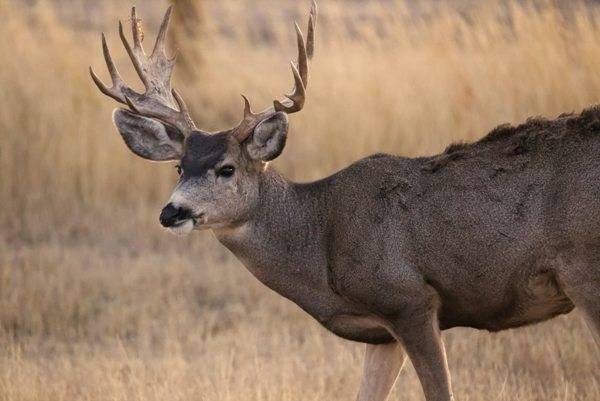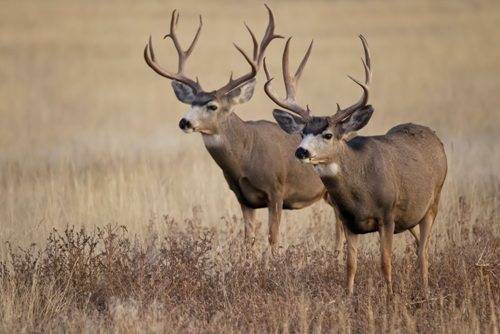Have you ever wondered “how much meat from a deer”? Because sometimes you seem to receive less real venison after coming back home from the butcher. There are some reasons for that issue. Not only does this post explain how to calculate your venison production, but it also provides helpful hints if you decide to prepare your deer meat at home.

Contents
How Do You Compute How Much Meat From A Deer?
Let’s make this clear before calculating how much meat from a deer you can get. Animals aren’t created equal, and some are just more meaty than others. So, deer, for example, do not have nearly as much flesh in their legs as, say, hogs.
Before accusing the butcher of underpaying you, keep in mind that you only receive roughly 35 – 45 percent of the deer’s field-dressed weight based on the exposure state of your meat.
Guess weight by the girth
You can not determine the weight of a deer just by looking at it. The best way to make calculated guesses is based on various circumstances, with the most straightforward method being based on the girth.
Girth refers to the circumference of a deer’s body at its widest point. The weight of a darling does not equal the weight of the meat. Its weight is made up of bones, skull, and skin.
Compute real weight by formula
Although there is no exact formula for calculating the venison you may get from a deer, you still can make realistic estimations as long as you know how to do the arithmetic correctly and have the relevant data.
To calculate the weight of the dear, you can apply the below formulae, presuming the dear meat is already lean (that is, fat-free) and boneless:
- Weight of the carcass = Field-dressed weight / 1.331
- Weight of Boneless Venison (ideal) = Carcass weight x 0.67
- (Realistic) Venison Yield = Weight of Boneless Venison x 0.7
The results may differ somewhat from the real yield, of course, but I’m pleased to report that this equation has produced more or less correct results for me. Just keep in mind that waste is one of the reasons your venison weight may be less than you thought.
How Much Meat From A Deer Can You Get?

An adult buck weighs around 160 lbs on average, whereas an adult doe weighs around lbs. Fawns, of course, weigh less (on average 100 lbs), but people rarely hunt them, so that we won’t include them in our calculation. It’s important to note that we’re discussing field-dressed weights here.
Using these above formulas, we can compute that: a 160-pound adult buck has a carcass weight of 120.21 lbs, a boneless venison weight of 80.5 lbs, and a real venison yield of 56.3 lbs.
A doe weighing 140 lbs may have a carcass venison weight of about 105.2 pounds, an optimum boneless weight of 70.5 pounds, and a real venison output of 49.33 pounds. After removing the waste from field dressing, that’s nearly 50 lbs of an adult doe meat.
Of course, all of this beef will not be delivered in a single large slab for you to freeze. Once you’ve delivered your venison to the butcher, he’ll quarter and cut the meat into smaller parts before returning it to you in batches.
What Factors Influence How Much Meat From A Deer?

There are several factors influencing the realistic venison of your deer. It may come from inside the animal; it also is from the external elements. Now, let’s discuss some common ones:
Buck vs Doe
When compared to the does, bucks have a larger body. Even if the bones are removed, the male generates more meat. Meat is scarce on the doe.
Age
Although age is not a huge issue, it still has an impact. Deer that are still developing don’t provide much meat. As their development curves progress and they become older, they develop undesirable eating habits that weaken them.
A deer that has been pregnant twice or impregnated a doe twice would produce a substantial amount of meat. A 3-year-old buck yields 200 pounds, while a ten-year-old deer provides 280 pounds.
Climate
There is scarcely enough food for the deer to eat over the summer months due to little rainfall. During the spring, though, the deer are more likely to produce a large amount of meat due to the abundant and nutritious food.
Age of the Meat
Moisture usually gets lost when meat ages. This results in a significant reduction in the venison of the boneless meat. It, however, has no impact on the meat’s flavor or quality.
Health
If you’re unwell, you’re unlikely to gain weight. In the same way, consuming meat from a sick animal makes it even more difficult.
Storing Techniques
No one likes throwing out meat; however, a significant amount may be wasted if it is not properly stored. From the moment the deer are slaughtered until it is consumed, proper meat preservation is essential. Like any other animal flesh, Deer meat spoils quickly, necessitating the use of the proper preservation procedure.
Butchering Skill
It is contingent on the butcher’s level of experience and skill. You’ll get 75% of the post-field-dressed meat from a knowledgeable butcher. You may lose up to 50% if your butcher isn’t experienced.
Besides, shooting is the most common method of killing deer. The section of the shot in the deer’s body is mostly removed because it is polluted.
If the bullet passes through a densely packed meal, the weight of the flesh is dramatically reduced. 2-4 percent of the flesh will be lost if it is stuck in the shoulder or rear back.
Noted: When go deer hunting, best american made rifle scope for deer hunting is important.
Conclusion
In most situations, hunters don’t notice much of a difference in meat output between the deer they kill. Does and bucks of similar age groups produce roughly the same quantity of meat. And now, you do not even need to be a math expert to figure out how much meat from a deer during a hunt would yield.
Was this information useful? What method do you use to calculate the weight of your venison? Please share your thoughts in the box below. Let’s discuss together!

I am Jerry Gonzalez, and my heart beats for the great outdoors, especially in the breathtaking landscapes of Helena, Montana. Engaging with fellow enthusiasts online and at local hunting clubs has been a rewarding experience, and I find great joy in sharing knowledge and experiences with like-minded individuals. My goal is to empower my fellow hunters with well-informed choices, regardless of their experience level.
